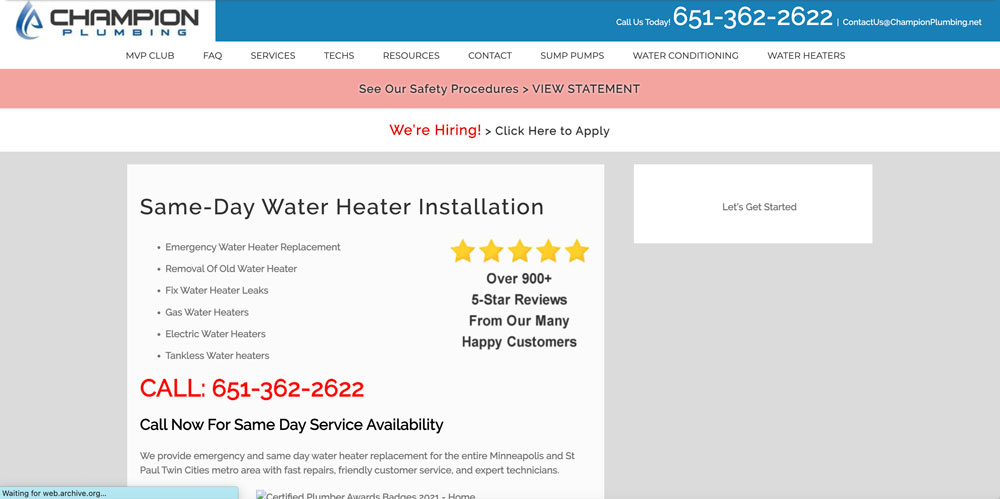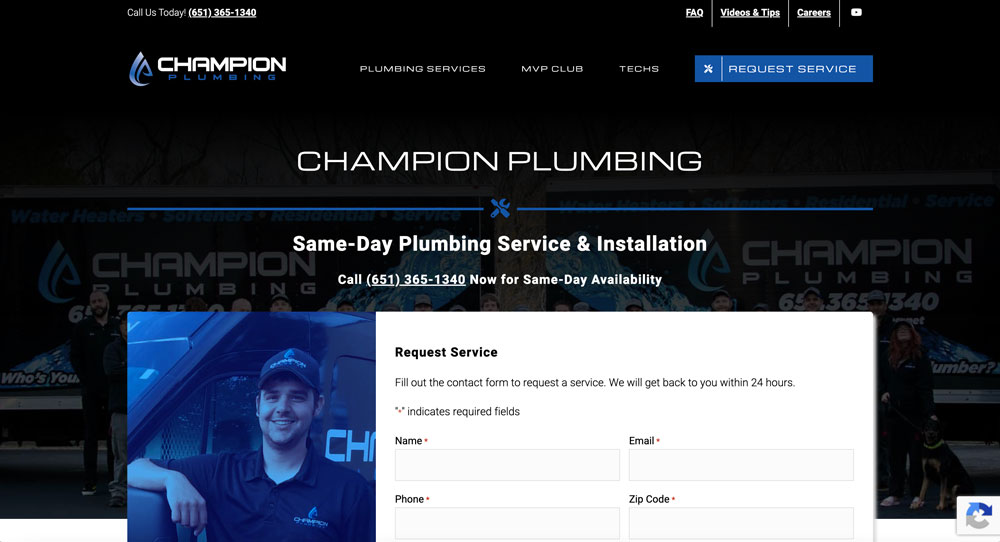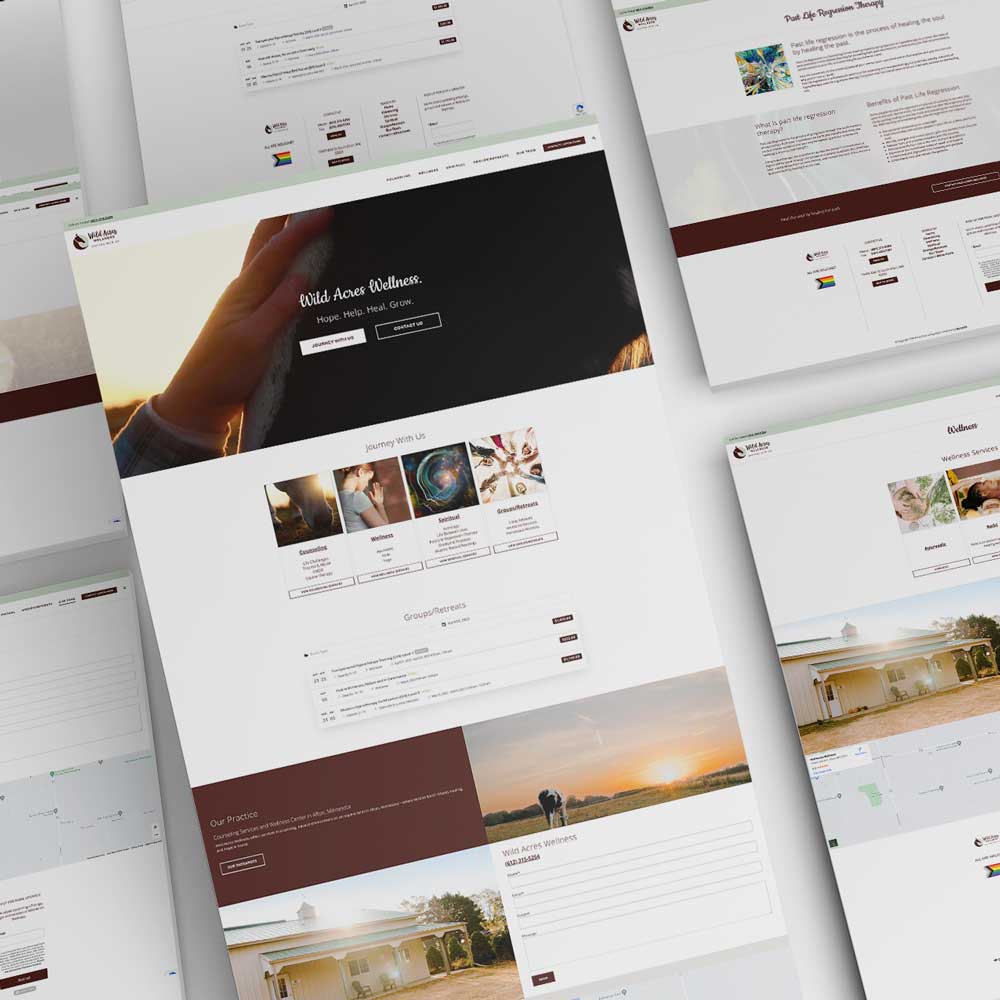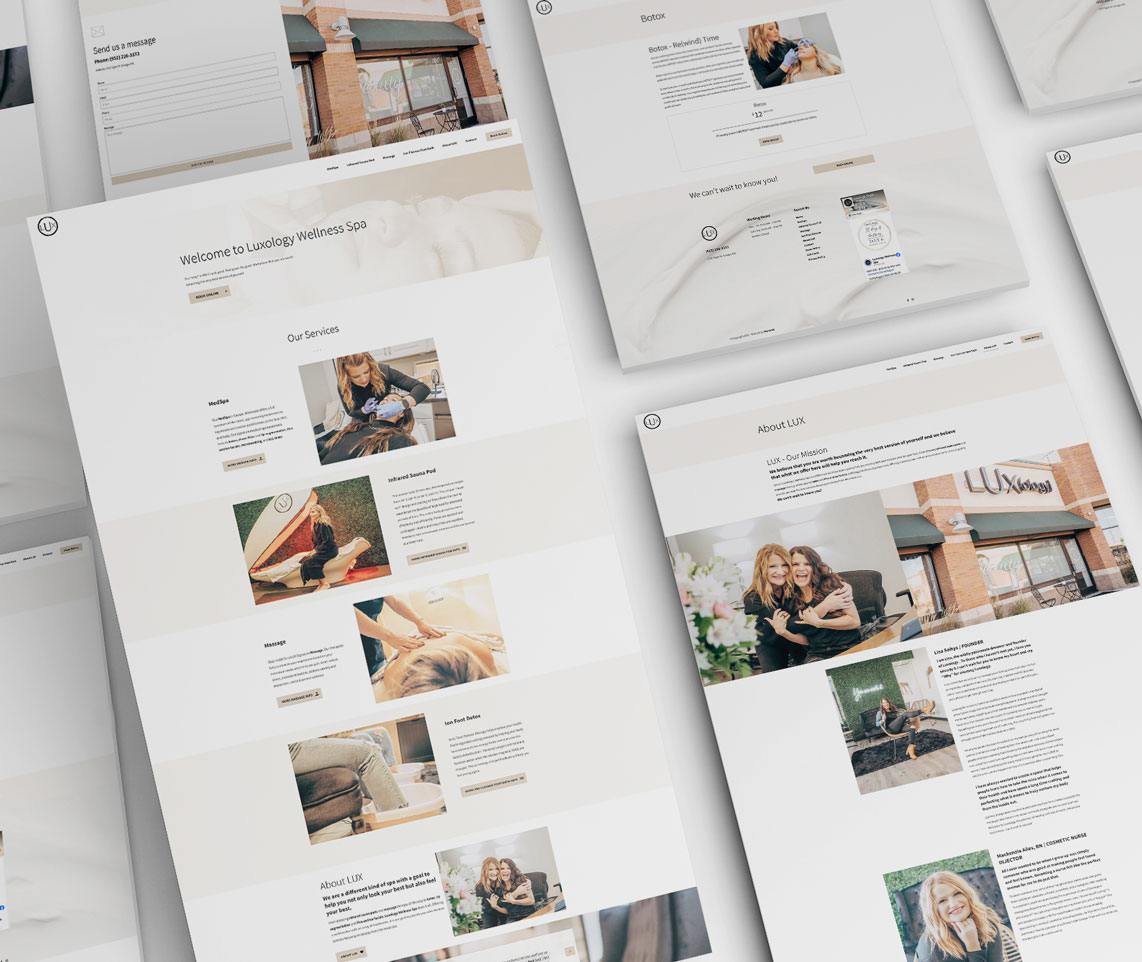Why Should You Redesign Your Website?
In today’s digital age, your website is often the first interaction potential customers have with your business. It’s your digital storefront, your 24/7 sales representative, and a crucial part of your brand identity. However, the online landscape is constantly evolving, and what worked for your website a few years ago might not be effective today.
This is where the power of website redesign comes into play. Whether you are looking to make your site more ADA-compliant, on-brand, user-friendly, etc…, revamping your website can help you achieve your goals. In this blog, we’ll explore the reasons why you should consider a website redesign.
Before and After a Website Redesign

Before

After
How Often Should You Redesign Your Website?
So, how often should you consider redesigning your website? The answer often comes intuitively when you’re in business. It’s that moment when you find yourself reevaluating your website’s structure (or your business structure), realizing it’s time for a tech-savvy facelift, or becoming aware of potential legal pitfalls, such as ADA compliance. Or maybe you just are looking to rebrand and are ready to upgrade your marketing.
For our loyal, long-term clients, this feeling typically has led to a website redesign every 3 to 5 years with some on their third iteration.
This might sound expensive or time-consuming. The key for long-term success with your website investment is starting on a stable, global platform that many utilize. Then, web redesigns down the road are feasible and cost-effective on the current platform. And, if its a common platform that most web designers utilize, you will have many options to pair with a great designer.
What are some of the benefits of a website redesign?
Website design isn’t just about enhancing aesthetics; it’s about aligning your website with the cutting-edge practices of modern marketing. A few of the benefits of a website redesign are:
Staying in Step with Design Trends:
Consider your website as a reflection of your brand’s identity. Just as your brand evolves, your website should align with the latest design approaches, ensuring a consistently fresh and engaging online presence and user experience for your users. Does your website’s look and feel align with how you want to be perceived? How does it compare to your competitors?
Embracing SEO Evolution:
The digital realm is governed by algorithms that shape your online visibility. A website redesign allows you to adapt to SEO updates, ensuring that your content ranks favorably in search engine results. It’s your ticket to staying ahead in the competitive SEO game, and constantly getting free traffic. Mixing search engine optimization into your marketing plan and budget is no longer an option, it is a must to stay competitive.
ADA Compliance:
Ensuring your website is ADA-compliant is more than a legal obligation; it’s a commitment to inclusivity. A redesign provides an opportunity to make your digital presence accessible to all, ensuring that everyone can engage with your content.
Enhancing User Experience:
User experience is the heartbeat of your website’s success. Redesigning offers a chance to reevaluate your pages. It’s an opportunity to fine-tune your content strategy and engage your audience effectively.
Filling Content Gaps:
Your website is your digital narrative, and every page should serve a distinct purpose. A redesign provides an opportunity to identify content gaps—those missing pieces that can enhance brand understanding and drive customers to your products or services.
Speed Matters in the Age of Google:
In the age of Google’s Core Web Vitals, speed and user experience go hand in hand. A slow website can deter visitors and impact your search engine rankings. Redesigning your site ensures it runs swiftly, providing the best possible opportunities to rank on google and provide an optimized user experience.
Planning Your Website Redesign
Assess What Works and What Needs Improvement
Before diving into your website redesign, it’s wise to take stock of what’s currently effective and where things could use some sprucing up. A practical way to go about this is by chatting with your team members and stakeholders. These are the people who deal with inquiries from the website, handle content updates, and create content.
Ask them straightforward questions about what they like and don’t like about the website. Find out what would make their lives easier and what improvements they believe would benefit your customers. These conversations provide valuable insights to guide your redesign strategy.
Look At Competitor Websites
While planning a website redesign, it is important to visit your competitor’s websites and evaluate their communication strategy. Are there new tech elements on their site that you could leverage? Do they have a streamlined way to take orders? Or a better way to engage with customers?
Conduct A Branding Exercise
When was the last time you engaged in a branding exercise to better understand your company, its vision, and your customers? Branding workshops shed light on your values, your why, your audience, and why are you are so awesome and better/different than your competitors. This discovery process helps develop targeted, focused messages and acts as a framework for consistent messaging and visuals.
Things To Avoid During A Website Redesign
Completely changing your domain name
Changing your domain name can be a tricky process. For example, you need to make sure that all your old URLs are being redirected to your new domain. Changing your domain name can seriously impact your organic traffic/search engine optimization, especially if previously your keywords were in your domain name. Many use their domain name as a part of their email address, so when your domain name is changed, you may need to create new employee email addresses and move the MX records associated with your email to the new domain.
Deleting Pages Without Redirects
It’s not uncommon that a client will decide they no longer need or want a certain page on their website. This is totally understandable, but it’s important to make sure that your deleted pages have redirects to current live pages on your website. If not, a user trying to find your website from an old link will be taken to a 404 error page.
Additionally, it’s vital to review any active advertising campaigns to ensure that targeted pages have not been removed or deleted.

Kickstarting a website redesign is a strategic move to ensure that your digital presence remains dynamic, user-friendly, and aligned with your evolving brand identity.
By navigating these considerations wisely, you can transform your website into a powerful tool that attracts and engages your audience, ultimately driving your business forward in the ever-evolving digital landscape.

